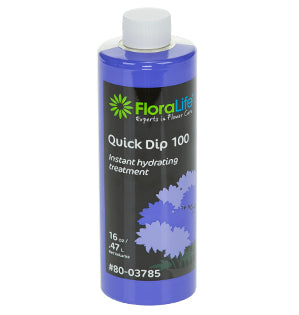Tall Wedding Reception Centerpiece
More and more we see Brides choosing an eclectic mixture of flowers, foliages and herbs for their weddings. Classic beauties like Phalaenopsis Orchids combined with herbs and roses from a home garden. In this video clip Leanne shares the alternative mechanics for creating tall reception wedding centerpieces using challenging blossoms and short stems. Enjoy!
Welcome to the FlowerSchool.com video library. I'm Leanne Kesler, director of the Floral Design Institute, and today I'm excited to share with you fabulous summer flowers in a centerpiece perfect for wedding receptions.
In today's weddings, a lot of brides are choosing a mixture of materials. It could be classic beauty like the phalaenopsis orchids, but then, much more casual items, maybe roses that are actually from the garden. So, they're very short, oftentimes bent and contorted, so a little more difficult to work with, but oh so beautiful.
Maybe herbs with stems that are relatively short. This is mint which is pretty fabulous. Some oregano, a little bit longer, but not super-long stems. Even the phalaenopsis are relatively short.
So how do you make a centerpiece that's big enough to show off well at a wedding reception with flowers that have very modest stems? I'll show you. The secret is alternative mechanics.
The vessel I'll use is this wonderful elevated vase. It's got a nice water reservoir, a lot of drama with the foot. Just needs to be filled with water that's mixed with flower food. I use Floralife, it works well and keeps your flowers alive for a very long time. Then, for the mechanics, we're going to use the florist armature from the Oasis Company. They come in silver, gold and copper, and it is just a netting that's perfect.
Now, you've seen me design before where I squish it down inside, and that supports great, but it needs longer-stemmed flowers. When you have shorter stems, you want to elevate it a bit, so rather than squishing it inside, just attach it over the top, securing it to the sides of the vessel, and then leaving it elevated to support your flowers.
For maximum beauty, you want to work in layers. Bring things in, giving it a cut and angling it through the armature down into the water. It's not going to reach all the way to the bottom all the time. Some of your longer stems will. The shorter stems, just as long as they're in the water, you'll be fine. Again, giving it a cut, angling it in, the mint. Everything radiates from a central binding point, so it's much as though you were working in foam, but instead of having foam in the water, you're using an armature of the top. You can bring it up towards the center, maybe a bit of the yarrow coming out.
And of course, bringing it around to the back. As a centerpiece, you want it to be all-sided. You don't want to leave any side flat, and I find it best just to kind of work from one side to the other, back and forth. Little bit of lambs ear gives a nice texture, and continue radiating until you get a base layer that will support all your flowers.
Now, it's beautiful as it is and oh so fragrant due to the herbs, so if you had a budget bride, you could stop right there, and it's stunning, but if you want to go ahead and add the flowers, now's when it gets really fun.
The roses, giving them a cut so that they'll drink well, and then making sure that they are down in the water but not worrying that they are a little short or curved because they'll still sit in there beautifully. Of course the garden roses have a few more thorns. You're going to kind of work around that. Make sure it's down in.
Coming in with some of the phalaenopsis orchids. The shortest ones, giving them a cut and letting them drape over the side, breaking the line, bringing the color downward. Taller can come more into the center, drawing your eye upward. Oh, so stunning. The freesia, giving them a cut and tucking them in. Getting that bright color, and even the veronica. Now these are a little longer, so I could go taller and also wider to get even a larger centerpiece begun.
As you finish, take a look closely. Make sure that you filled it in. See the elegant texture underneath that provides depth, drawing your eye in, and then the flowers atop, just to really give you that drama. And go back and add maybe some grasses. Get a little movement coming through. Just tucking them, finding a hole that they can just slide right in. Maybe I'll put a few on this side. Then go back if you've got a spot which seems a little bare, and tuck in a little of the lambs ear or the mint or the oregano, but just finish filling until you're happy with the flow of all the lines.
As a florist, summertime is such a fabulous season, so many different things to work with, to create grand designs, and as a professional, it's vital that we know all the mechanics available to us so that no matter what the flower is and its personal, quirky characteristics, we know how to design with it.
For more education and creative inspiration, you'll find it on the website flowerschool.com. If you questions, you can reach us through there or by telephone at 503-223-8089, and I'd love to see what you create. Take a picture. You can send it to my personal email, Leanne@floraldesigninstitute.com or better yet, post it on social media so we all can see. Just tag Floral Design Institute so we can find it. Now it's your turn. Have fun, and do something you love.





